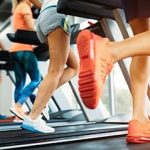
Even small increases in a man’s cardio fitness can significantly reduce his risk of developing prostate cancer, researchers report. An annual increase in aerobic fitness of 3% or more is linked to a 35% lower risk of prostate cancer, according to a report published Jan. 30 in the British Journal of Sports Medicine. “Improvements in [cardiorespiratory fitness] in adult men should be encouraged and may reduce the risk of prostate cancer,” concluded the research team led by Dr. Kate Bolam, an exercise oncology researcher with the Swedish School of Sport and Health Sciences GIH in Stockholm. There already is good evidence regarding the benefits of physical activity when it comes to overall cancer risk, but the association between fitness and prostate cancer risk has not been well-studied, researchers said in a journal news release. To examine this, they analyzed the records of nearly 58,000 men kept in a national occupational health profile database. The men included in the study had taken at least two cardio fitness tests, measured by pedaling on a stationary bike. The database also included information on physical activity, lifestyle and body-mass index. Researchers divided the men into groups according to their fitness trends – those whose heart fitness improved by 3% or more annually, fell by more than 3% or remained stable during the study period. During an average follow-up period… read on > read on >


































-300x200.jpg)



